Use of Wood Composite Panels as Substrate for Cabinet Manufacturing
Wood based panels are composed of wood or other lignocellulosic material broken down into small elements and then reconstituted to form new products using different binders under pressure and heat. Production of wood composites such as particleboard and fiberboard has been constantly increasing in the U.S. for the last 25 years. Both panel products are extensively used as a raw material in the furniture and cabinet industries. This fact sheet summarizes basic manufacturing steps, properties of the two types of panels, and their importance in furniture and cabinet manufacture as substrate for thin overlays.
Particleboard
Particleboard is one of the most commonly used panel products in furniture and cabinet manufacturing, shelving, and in building applications such as, floor underlayment, laminated flooring, and wall paneling. The main raw material of particleboard is low quality logs and residue from wood products manufacturing. Fast growing species, such as aspen and other hardwood or softwood species, can be used in the form of whole-tree chipped furnish as a raw material for particleboard manufacture. In most cases, chips are reduced into particles by using a hammermill, disk-refiner, or flaker before the furnish (the particles used for making the board) is dried to approximately 3 to 5 percent moisture content. The dried material is classified with respect to predetermined sizes such as fine and coarse particles on different mesh size screens. Figure 1 shows chip screening prior to particle reduction. Next the material is blended with urea-formaldehyde, which is the most commonly used interior resin. The wax and catalyst are also added into the furnish during the blending process to improve dimensional stability of the board and insure the fast curing rate of the resin in the press. The resin and the wax content in the final product ranges from 5 to 9 percent and from 0.4 to 1 percent, respectively. Blending is followed by the forming line, where the furnish is formed into a three-layer loose mat. Fine material is laid on the face layers and coarse particles make up the core layer of the mat. Figures 2 and 3 show schematics of a three-layer mat and unpressed panel at a forming station. Multi-opening presses are also widely used in particleboard manufacturing. Mats are compressed using 600 to 740 psi (pounds per square inch) of pressure at a temperature of 350 to 380°F for 4 to 6 minutes depending on the type of furnish, panel thickness, and other manufacturing variables. Cutting large panels into desired dimensions and sanding them to have a uniform thickness are the final two steps in a typical particleboard manufacturing. Figures 4, 5, and 6 illustrate a general process flow diagram of particleboard manufacturing, multi-opening press, and conditioning of the panels after the press, respectively.
Particleboard panels are manufactured in a variety of dimensions and density levels providing the opportunity to design the end products with the specific panel needed. Particleboard volume is normally referred to in square feet of surface for a 0.75-inch thick panel. The typical symbol is MSF (million square feet) 0.75-inch, which translates to 1,000 square feet of 0.75-inch thick board (M=1,000). All panels can be referenced by this way by multiplying the actual thickness by a conversion factor.
Panel density is one of the most important properties of particleboard; it influences both physical and mechanical properties of the final product. Bending strength, internal bond strength, screw holding strength, and dimensional stability are significantly affected by board density. Table 1 displays some of the properties of commercially manufactured particleboard and medium density fiberboard (MDF) panels as a function of board density. In general, pound cubic foot is used as a density measure of panels in the industry. For example, if a piece of particleboard is 8-inch by 15-inch by 0.75-inch and weighs 2.5 lb, its density will be:
2.5 ÷ [(8 x 15 x 0.75) ÷ 1728] = 48 lb/ft3
(0.76 g/cm3)
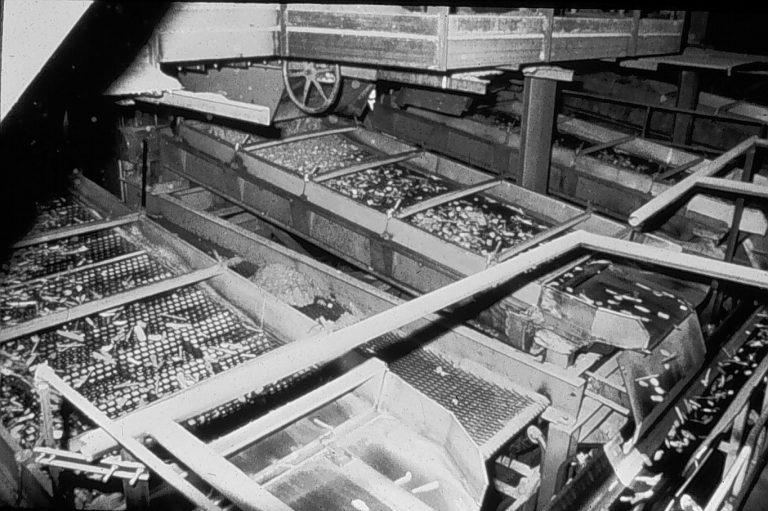
Figure 1. Chip screening. (Courtsey Georgia-Pacific Corp.)
Figure 2. Schematics of 3-layer particleboard mat.

Figure 3. Unpressed particleboard mat. (Courtsey Georgia-Pacific Corp.)
Figure 4. Flow chart of a typical particleboard manufacture.

Figure 5. Multi-opening particleboard press. (Courtsey Georgia-Pacific Corp.)
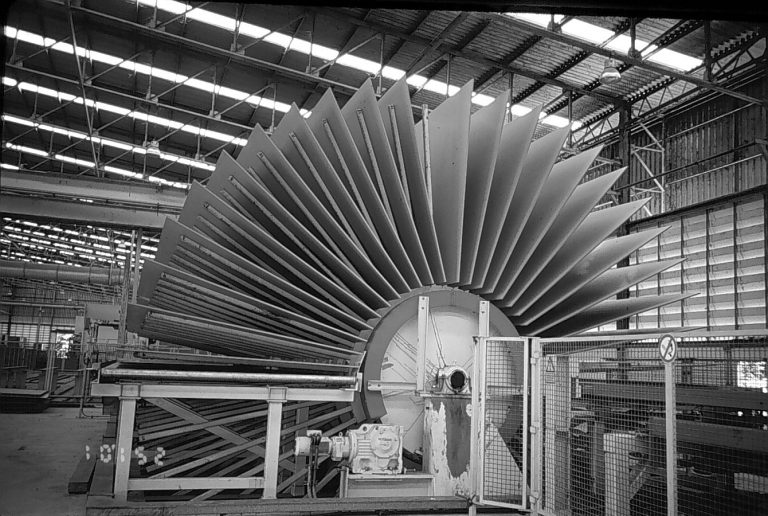
Figure 6. Panel conditioning.
Table 1. Selected properties of particleboard and MDF. (Adapted from Composite Panel Association)
| Panel Type and Density | MOE (psi) | MOR (psi) | IB (psi) | Screw Holding Face (lb) | Screw Holding Edge (lb) |
|---|---|---|---|---|---|
| PB 50 lb/ft3 | 350,000 | 2,400 | 145 | 420 | 350 |
| PB 40-50 lb/ft3 | 275,000 | 1,900 | 57 | 220 | 200 |
| PB 40 lb/ft3 | 110,000 | 600 | 30 | 100 | N/A |
| MDF 50 lb/ft3 | 450,000 | 4,000 | 120 | 350 | 300 |
| MDF 40-50 lb/ft3 | 350,000 | 3,000 | 80 | 300 | 220 |
| MDF 40 lb/ft3 | 200,000 | 1,800 | 40 | 50 | 150 |
Fiberboard
Fiberboard is manufactured from refined or partially refined wood fiber. The major manufacturing process of fiberboard is relatively similar to that of particleboard. The difference being that, fibers the smallest element of wood, are used as the raw material in the manufacture of fiberboard rather than particles. Chips are converted to fibers using various techniques and equipment such as, single- or double-disk refiners, defibrators, pressurized refiners, and atmospheric refiners. The chips are treated thermally in one of the above pieces of equipment during the defibrating process, where the chemical solution gets into the wood. Once fiber is produced and blended with resin, the next step is pressing the mat, which is similar to that of the particleboard press line as shown in Figure 7. However, continuous press line (the Mende Process) that produces panels with 0.125-inch to 0.150-inch thickness is very common in fiberboard manufacture. Panels manufactured using the Mende Process are widely used in door skin manufacturing. Figure 8 is an illustration of the Mende Process.
Fiberboards like particleboard, can also be classified based on density. Medium density fiberboard with an average density ranging from 0.70 g/cm3 (44 lb/ft3) to 0.80 g/cm3 (50 lb/ft3) is generally used as the industrial core stock in direct competition with particleboard. MDF differs from other fiberboard products in terms of its unique combination of moderate overall density profile and resin content that gives it excellent profiling characteristics. Because of its very smooth surface, MDF is a superior substrate for thin overlays such as ultra thin melamine impregnated papers, films, and for direct finishing applications.
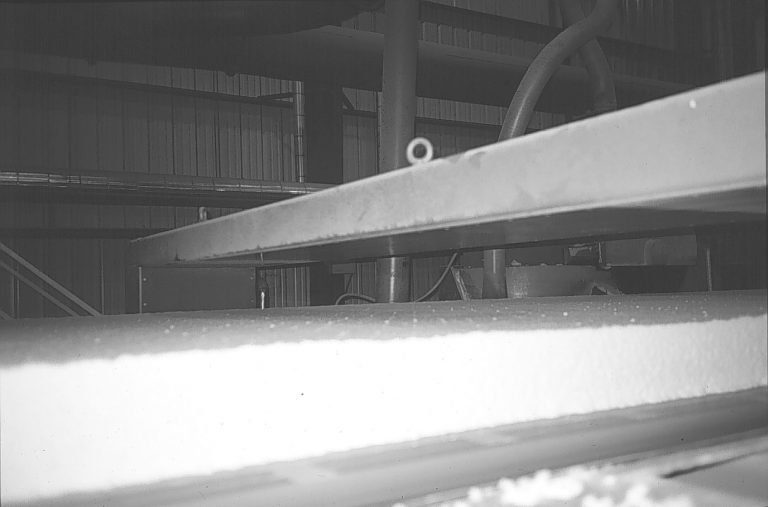
Figure 7. Unpressed fiberboard mat. (Courtsey Dominanee Industries, Pan Pacific Products)
Figure 8. Schematics of continuous (Mende) process.
Panel Materials in Cabinet Manufacture
Both particleboard and MDF are major panel products widely used in the form of laminated panels in cabinet manufacturing that includes kitchen cabinets, office furniture, bedroom cabinets, entertainment centers, and storage cabinets. Laminating of substrate involves two processes: self-bonding and adhesive bonding. Veneer and high-pressure laminates (HPL) such as Formica are examples of adhesive laminates used for many years in the cabinet industry. HPL consists of printed papers that have been saturated with a thermosetting resin and then pressed with 1,000 to 1,400 psi of pressure. High durability and abrasion resistance of HPL are important specifications of such overlay products. High quality veneer is a premium laminated product for both particleboard and MDF. However, its high cost compared to resin impregnated paper is its main disadvantage. Melamine resin impregnated thin papers are used to cover the panel surface with the application of heat and pressure in a typical overlaying process. Press temperature and pressure can range from 270 to 360°F and from 145 to 360 psi depending on overlay specifications.
Particleboard panels, with even fine particles used on the surface layers, have a relatively rough surface as compared to a MDF. Therefore, particleboard is a more suitable substrate for thick overlays, such as veneer or high pressure laminates. Otherwise, irregularities in the substrate show through, which may ultimately reduce the quality of the products. MDF is an ideal panel material for thin overlays such as aluminum foil, rice paper, or even direct application of a thin layer of finish to the surface. The excellent surface characteristics of MDF make it the best substrate for cabinet manufacturing. Figures 9A and 9B show a comparison of surface roughness profiles of MDF and particleboard obtained from a stylus type profilometer. Figures 10 and 11 also present an overlaying process and various overlaid panels, respectively. Such panels are used extensively in cabinet manufacturing.
Figure 9A. A typical roughness profile of particleboard.
Figure 9B. A typical roughness profile of MDF.
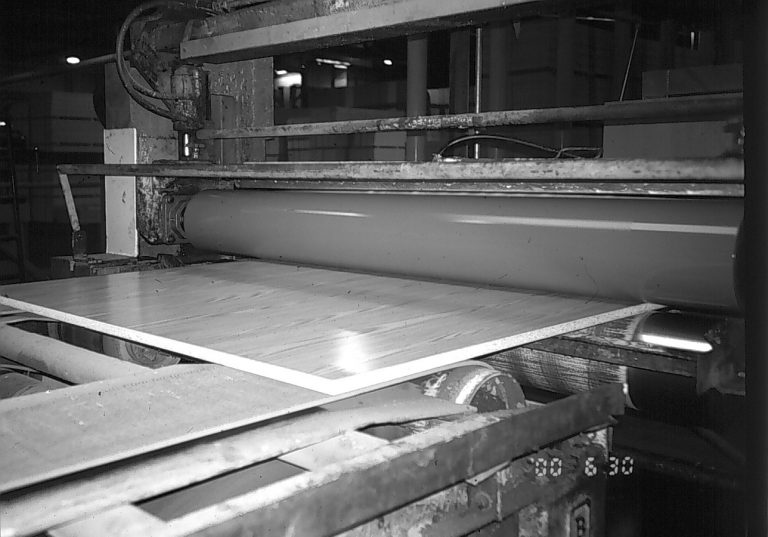
Figure 10. Overlaying process.
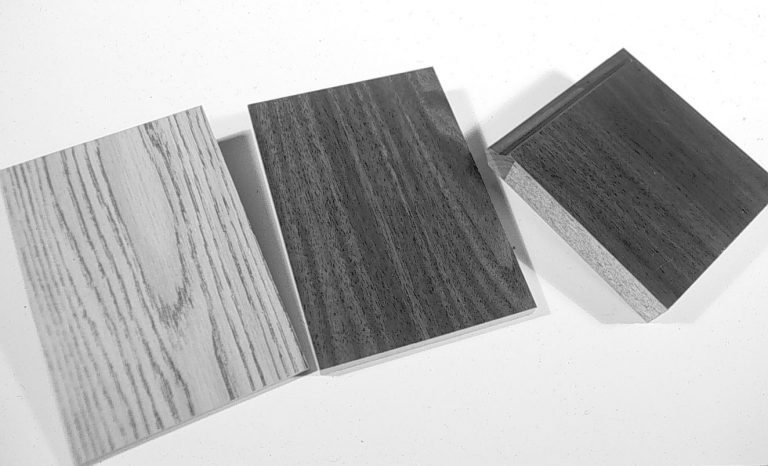
Figure 11. Overlaid panel products for cabinet manufacture.
Laminating Process
Cauls, flat metal plates with very smooth surface or embossed wood grain patterns, are used for a typical laminating process. The quality of cauls, cleanness, and temperature are key factors that influence laminating quality. Laminating press parameters are displayed in Table 2. Tissue like papers with printed wood grain patterns weighing approximately 20 to 30 g/m2 are commonly used as overlay material. These papers are either resin impregnated or hot rolled laminated overlays. Sometimes resinating is used to improve surface quality of the panels prior to laminating. Resinating of the panel involves passing the panel under high pressure between two heated and polished steel rollers. This process causes the resin to become liquid and the film is calendared under the influence of the steel rollers and pressure. Foils are another example of overlays that are heavier than thin papers (50 to 130 g/m2). They are usually impregnated with melamine thermosetting resins or left untreated for special applications. Foils require adhesive for laminating and are usually called melamine papers in the industry.
Decorative heavy vinyl, which can be rigid or semi rigid, is also used as an overlay film. It is made of polyvinyl chloride (PVC) and its thickness ranges from 0.002 to 0.004 inch. Often, it is pre-embossed with different patterns and always requires an adhesive to bond it to the substrate. Two-ply sandwich films and wrapping films are also commonly used as a decorative vinyl to overlay particleboard and MDF panels.
Table 2. Laminating parameters.
| Laminating Material | Temperature (°F) | Pressure (psi) | Time (sec) |
|---|---|---|---|
| Polyester | 280-330 | 175-200 | 50-200 |
| High Density Papers | 290-300 | 170-200 | 200-250 |
| Melamine Papers | 300-320 | 300-340 | 40-70 |
Conclusion
Overlaid wood composite panels have a great market share in the wood products industry, and they play an important role in furniture and cabinet manufacturing. Further detailed information about composite panel manufacture and overlaying techniques can be found in the following literature.
Kitchen Cabinet Manufacturers Association. 1899 Preston White Dr. Reston, VA 20191. www.kcma.org.
Laminating Material Association. 116 Lawrance. St. Hillsdale, NJ 07642. www.lma.org.
Maloney,T. 1993. Modern Particleboard and Dry Process Fiber Manufacturing. Miller Freeman Inc. San Francisco.
National Particleboard Association (NPA). 1992. From Start to Finish Particleboard.18928 Premiere Court, Gaithersburg, MD 20879.
Suchsland, O. 1992. Fiberboard Manufacturing Practices. USDA Forest Service Handbook Agricultural Handbook No 640. Washington.
Wood Products Manufacturers Association. 175 State Rd.E. Westminister, MA 01473.
Salim Hiziroglu
Assistant Professor, Forestry





